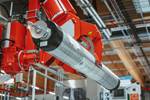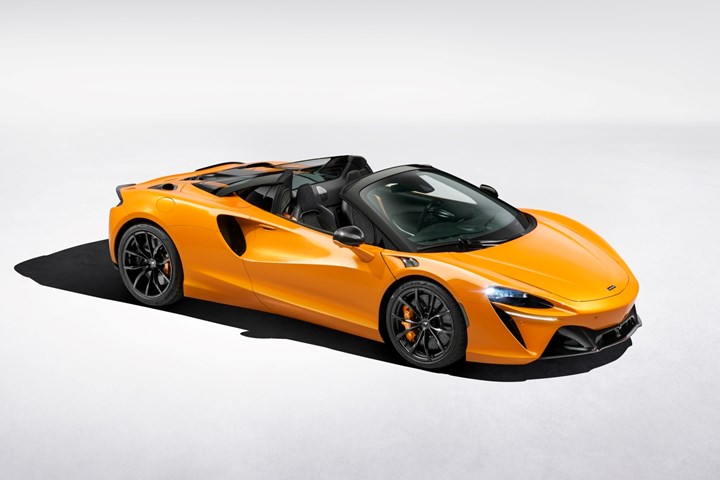McLaren maximizes composites use with release of Artura Spider
The supercar has been designed and developed to meet ambitious targets with the incorporation of McLaren’s MCLA architecture, even sporting a composite retractable hard-top.
McLaren (Woking, U.K.) has revealed the new Artura Spider, its first convertible with a high-performance hybrid powertrain and the second Artura model. The supercar introduces upgrades to power, performance and driver engagement, in addition to a retractable hard-top for open-top driving. Notably, McLaren prioritized weight reductions for the vehicle, incorporating the company’s extensive carbon fiber expertise.
“The new Artura is next-generation supercar, whichever model you choose,” says Michael Leiters, CEO of McLaren Automotive. “We have upgraded the powertrain and the chassis systems to deliver more power, more dynamic performance and even higher levels of connection with the driver — without any compromise in everyday driving. And now alongside the new Artura coupe we have the Artura Spider, a new convertible that has all of these improvements and brings another dimension of open-air McLaren supercar exhilaration to our range.”
The McLaren Carbon Lightweight Architecture (MCLA) is at the heart of the Artura, providing a secure platform with no loss of rigidity when the fixed roof is removed — the majority of the 136-pound difference between Spider and coupe is accounted for by the electrically operated retractable hard top (RHT) mechanism. Beyond its core carbon fiber monocoque, MCLA incorporates aluminum impact structures and a rear structure that houses the hybrid powertrain. Ethernet electrical architecture is also part of MCLA, reducing cabling by 25% (and proportional weight) while increasing the Spider’s data capacity and transfer speeds.
Moreover, the RHT is made completely from fiber-reinforced composites, along with its mechanism and eight small electric motors. Able to deploy or retract in 11 seconds, the RHT was designed to channel air toward the outlet, also known as the “chimney,” which has been repositioned to accelerate the flow of hot air from the powertrain.
In total, the Artura Spide has a dry light weight of 3,212 pounds, with a curbweight (DIN) of 3,439 pounds. It is capable of reaching zero to 100 kilometers/hour in three seconds. The McLaren supercar is equipped with a high-tech braking system, featuring carbon-ceramic discs paired with forged aluminum brake calipers. Despite its 700 horsepower, the Artura Spider fully exploits its hybrid system and only emits 108 grams/kilometer CO2 according to homologation tests.
The new Artura Spider and Artura coupe — which are both designated 2025 model year (MY25) — are available to order now, with first deliveries from mid-year.
Find more details about the McLaren supercar here.
Related Content
-
Hexagon Purus opens new U.S. facility to manufacture composite hydrogen tanks
CW attends the opening of Westminster, Maryland, site and shares the company’s history, vision and leading role in H2 storage systems.
-
Thermoplastic composites: Cracking the horizontal body panel nut
Versatile sandwich panel technology solves decades-long exterior automotive challenge.
-
SMC composites progress BinC solar electric vehicles
In an interview with one of Aptera’s co-founders, CW sheds light on the inspiration behind the crowd-funded solar electric vehicle, its body in carbon (BinC) and how composite materials are playing a role in its design.

















